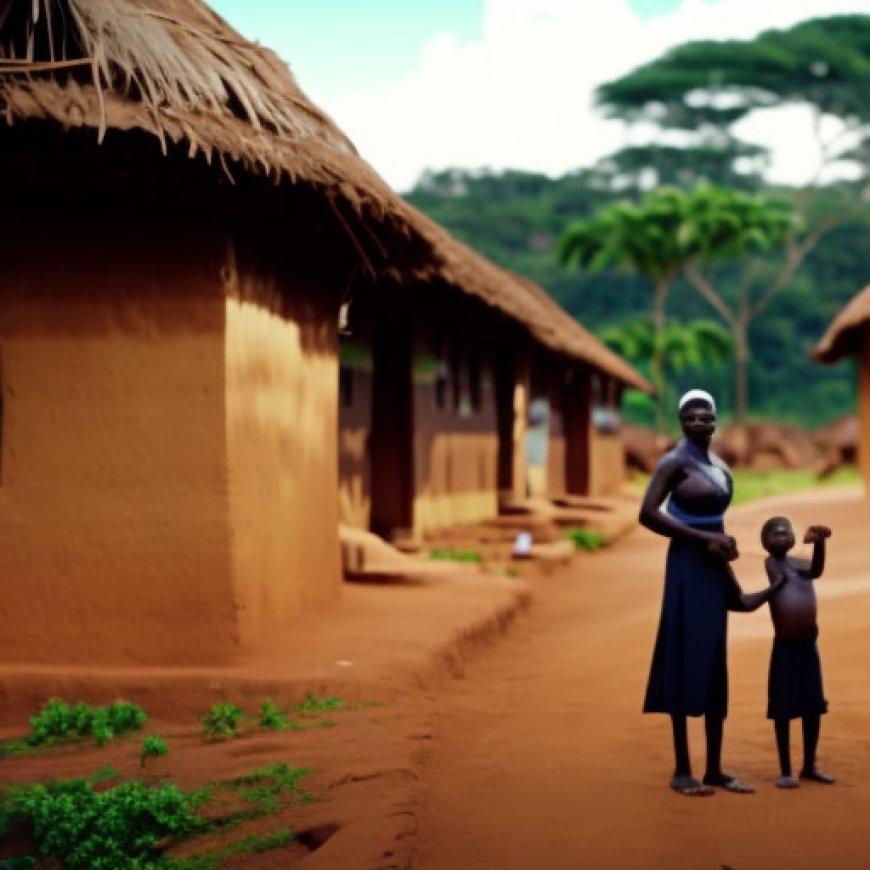Ugandan village celebrates its first clean water source in 90 years
Ugandan village celebrates its first clean water source in 90 years Monitor


Residents of Kiikuuta Village in Kyegegwa District Finally Get Clean Water Source
At least 1,000 residents across Kiikuuta Village in Kakabara Sub-county, Kyegegwa District, are celebrating after finally getting a clean and protected water source for the first time in 90 years.
Background
- The residents have relied on water collected from runoffs along the roadside or endured over 15km-journeys to reach the Nyakabiso River.
- Over the last near-century, residents have endured the burden of waterborne diseases such as diarrhoea and typhoid due to the lack of access to safe water.
Impact on Sustainable Development Goals (SDGs)
Sustainable Development Goal 6: Clean Water and Sanitation
- The provision of a clean water source in Kiikuuta Village contributes to SDG 6 by ensuring access to safe and affordable drinking water for the residents.
- This initiative will improve the health and well-being of the community, reducing the prevalence of waterborne diseases.
Testimonials from Residents
- Sixty-year-old Kikuuta Village resident Joseph Bareekye stated that majority of his village mates lived and died without ever accessing safe water.
- Residents like Wilbroad Rubaramira are optimistic that they will no longer have to spend money on treatment, as the new clean water source promises to improve their health and well-being.
Partnerships and Funding
- The Shs6.6 million clean water project was enabled by MTN Foundation Uganda under the Change Makers program in partnership with Soul Rescue Mission.
- Kyegegwa District assistant water officer Sarah Nakachwa highlighted the need for more government funding and called for development partners to work with the district.
Access to Safe Water in Kyegegwa District
- Overall access to safe water in Kyegegwa District is at 30%, with rural areas at 29% and urban areas at 48%.
- The district currently has 661 domestic water points, serving a significant portion of the population in rural areas.
- However, a concerning statistic reveals that a total of 131 water points have been non-functional for over 5 years and are considered abandoned.
Access to Safe Water by Sub-county
- Hapuuyo sub-county: 55%
- Kabweeza-Kyegegwa: 31%
- Kakabara: 27%
- Kasule: 36%
- Kyegegwa Town Council: 48%
- Mpara: 33%
- Rwentuha: 21%
- Ruyonza: 20%
SDGs, Targets, and Indicators
1. Which SDGs are addressed or connected to the issues highlighted in the article?
- SDG 6: Clean Water and Sanitation
2. What specific targets under those SDGs can be identified based on the article’s content?
- SDG 6.1: By 2030, achieve universal and equitable access to safe and affordable drinking water for all.
- SDG 6.2: By 2030, achieve access to adequate and equitable sanitation and hygiene for all and end open defecation, paying special attention to the needs of women and girls and those in vulnerable situations.
3. Are there any indicators mentioned or implied in the article that can be used to measure progress towards the identified targets?
- Access to safe water in Kyegegwa District: The article mentions that the overall access to safe water in Kyegegwa District is at 30%, with rural areas at 29% and urban areas at 48%.
- Number of non-functional water points: The article states that a total of 131 water points in Kyegegwa District have been non-functional for over 5 years and are considered abandoned.
- Access to safe water in specific sub-counties: The article provides percentages of access to safe water in different sub-counties of Kyegegwa District.
Table: SDGs, Targets, and Indicators
| SDGs | Targets | Indicators |
|---|---|---|
| SDG 6: Clean Water and Sanitation | 6.1: By 2030, achieve universal and equitable access to safe and affordable drinking water for all. | Access to safe water in Kyegegwa District: 30% overall, 29% in rural areas, and 48% in urban areas. |
| SDG 6: Clean Water and Sanitation | 6.2: By 2030, achieve access to adequate and equitable sanitation and hygiene for all and end open defecation, paying special attention to the needs of women and girls and those in vulnerable situations. | Number of non-functional water points in Kyegegwa District: 131. |
| 6.2: By 2030, achieve access to adequate and equitable sanitation and hygiene for all and end open defecation, paying special attention to the needs of women and girls and those in vulnerable situations. | Access to safe water in specific sub-counties of Kyegegwa District: Hapuuyo (55%), Kabweeza-Kyegegwa (31%), Kakabara (27%), Kasule (36%), Kyegegwa Town Council (48%), Mpara (33%), Rwentuha (21%), and Ruyonza (20%). |
Behold! This splendid article springs forth from the wellspring of knowledge, shaped by a wondrous proprietary AI technology that delved into a vast ocean of data, illuminating the path towards the Sustainable Development Goals. Remember that all rights are reserved by SDG Investors LLC, empowering us to champion progress together.
Source: monitor.co.ug

Join us, as fellow seekers of change, on a transformative journey at https://sdgtalks.ai/welcome, where you can become a member and actively contribute to shaping a brighter future.







